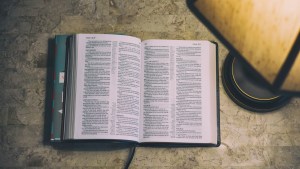For thousands of years, the Psalms have been put to the music of just about every genre available. Those poetic phrases have inspired countless Church composers to produce some of the most reverent and thrilling tunes to ever grace a musical staff. While there are countless psalmic musical examples in the modern Catholic songbook, however, there are none from the First Temple period, when the Psalms were still fresh and new.
Indeed we know that the Psalms were meant for music by their name. The word Psalm comes from the Greek, psalmoi, meaning “instrumental music.” Interestingly, the word “instrumental” is doubly fitting, as the voice is the instrument of the angels and the texts of the Psalms could be considered instrumental to faith formation and practice.
The question of what a First Temple era performance of the Psalms might have looked like is the topic of a new study by Swiss professor Thomas Staubli. Staubli’s study, published in Biblical Archeology Review, attempts to piece together the early performance elements through extra-biblical texts and archaeology.
The Study
Staubli noted that there were a variety of factors which led to the scant amount of sources on the subject. The Biblical Archaeology Society notes that first and foremost, there was no musical notation in that era and little documentation. The biblical prohibition of graven images further prevented artistic representations of psalmic performances.
With few sources to examine, Stoubli began to look for parallels between the Psalms and ritual prayers of other popular religions of the time. One example he found was in the Mesopotamian religion; a “lifted-hand” petition prayer to the goddess Ishtar. This prayer is similar to the Psalms, in that it contains “designations of the genre, the function of the prayer, or descriptions of ritual enactments.”
Stoubli wrote of the Mesopotamian prayer:
“It is the wording of the lifted-hand prayer to the goddess Ishtar. Its ritual: In an inaccessible place (lit., where the foot is kept away) you sweep the roof, you sprinkle pure water, and you lay four bricks at right angles to one another. You heap twigs of the Euphrates poplar (on the brazier), and you kindle the fire. Aromatic plants, scented flour, and juniper wood you strew. You pour out beer. You do not prostrate yourself…”
There were instruments
While the account of the Mesopotamian ritual would not be the same as those of the Jewish faith, cultural and regional parallels suggest they could be similar.
Stoubli’s conclusions also suggested that Psalmic singers were accompanied by instrumentalists. Stoubli determined this from numerous reliefs of musicians depicted on stones in the Levant region. He wrote:
“The Bible does not tell us much about how psalms were originally performed. Archaeology and extra-Biblical texts, however, can shed some light on the music and dance that accompanied psalms in Biblical times,”
Read more of this fascinating biblical study at the Biblical Archeology Society.


